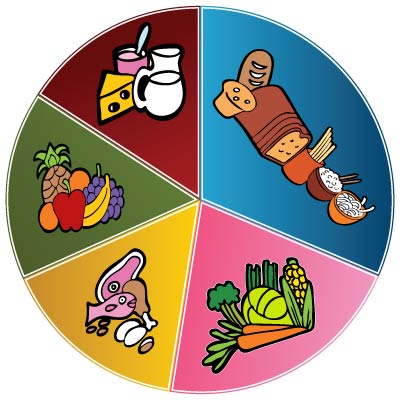
Editor’s Note: The following article is one in a series of pieces inspired by a celebration of Latino heritage and smart nutrition, brought to you by BeechNut/Goya.
You’ve been feeding your baby breast milk or formula exclusively for the first 5-6 months. At some point, you are going to have to introduce solids; but where should you start? Which types of foods are appropriate at different ages?
After having three kids, I like to think I’ve got this pretty down pat. Here is my easy to follow chart for what foods to introduce and when:
4-6 MONTHS
This is when you introduce your baby’s first foods. Most baby foods are labeled as Stage 1 for this time period. Honestly, it really doesn’t matter which foods you want to introduce your baby to first, but you should start with single ingredient foods. Always offer one new food at a time and wait about three days before trying another new food, to make sure she doesn’t have any allergic reactions or stomach upset.
- Cereals/Grains: Try single-grain cereals like rice, oatmeal or barley. Start with 1 tablespoon cereal mixed with 4-5 tablespoons of breast milk or formula. Thicken it as your baby is able to swallow better.
- Fruits: Introduce apricots, apples, avocados, bananas, mango, nectarines, papaya, peaches, pears, plums, prunes and pumpkin.
- Vegetables: Butternut squash and winter squash, carrots, green beans, peas and sweet potatoes are good starter vegetables.
- Proteins/Meats: Use Stage 1 foods that are pureed. You can also use beef, chicken or turkey broth to make purees.
Read Related: The Latin Table Made Easy & Healthy!
6-8 MONTHS
Here is where you can begin mixing more than one ingredient. Commercial baby food is labeled as Stage 2. Stage 2 baby foods look pretty similar to Stage 1 baby foods; however, Stage 2 foods have a thicker texture and use combinations of fruits or vegetables instead of single ingredients. The portions are also larger.
- Cereals/Grains: Try rice, oatmeal or barley cereals plus cooked rice.
- Fruits: Offer apricots, apples, avocados, bananas, berries, cherries, kiwi, mango, melons, nectarines, papaya, peaches, pears, plums, prunes, pumpkin and strawberries.
- Vegetables: Try a variety, including asparagus, butternut squash and winter squash, broccoli, Brussels sprouts, carrots, cauliflower, corn, green beans, parsnips, peas, potatoes, summer squash, sweet potatoes and zucchini.
- Protein/Meats: Stages 2 foods or combination foods, as well as beans, beef, chicken, fish, ham, tofu and turkey.
- Dairy: Cheese (except soft, unpasteurized cheese) and yogurt.
8-10 MONTHS
Sometime around this time period, your baby will be ready for food with more texture. Stage 3 foods, which contain somewhere around 6 oz. per jar, are mashed and have a lot more texture than pureed foods, and they have tiny bits and chunks of meats or veggies in them. These help your baby transition into table food. If you are feeding your baby fresh food, mash it up with your fork but leave a little texture.
- Cereals/Grains: Try rice, oatmeal or barley baby cereals made to a thicker texture. Your baby can start nibbling on crackers, low-sugar, low-fat cereal (like Cheerios), pasta and rice.
- Fruits: Offer fresh apples, apricots, avocados, bananas, berries, cherries, grapes, kiwi, mango, melons, nectarines, papaya, peaches, pears, plums, prunes, pumpkin and strawberries. Make sure you cut up these fruits very small or mash them with a fork.
- Vegetables: Try asparagus, butternut and winter squash, broccoli, Brussels sprouts, carrots, cauliflower, corn, green beans, parsnips, peas, potatoes, summer squash, tomatoes and zucchini.
- Protein/Meats: Stage 3 foods and beans, beef, chicken, fish, ham, tofu and turkey.
- Dairy: Cheese (except soft, unpasteurized cheeses) and yogurt.
10-12 MONTHS
Your baby is getting ready to eat all sorts of table foods. You can introduce nearly all foods here and since your baby will most likely have a few teeth, she’ll be able to chew different textures. In addition to the foods you’re already offering, you can add Stage 4 baby foods to her diet.
Remember that each child is different and will eat certain foods at different times. It’s important to make sure you select foods your child is able to swallow and chew well (when appropriate). Your child might not be very receptive to new foods at first, but don’t be discouraged, and continue to introduce foods on different occasions.










